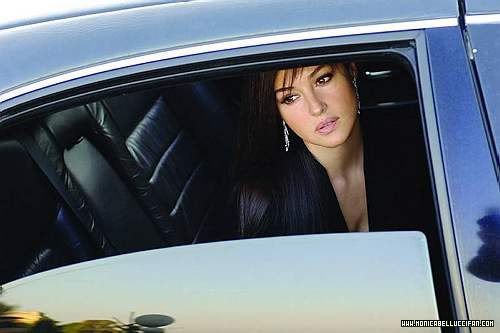The sum of its constellations is not one and the same as the Milky Way, and likewise holding an exquisite map is not one and the same as knowing the whole world. My exploration of
Hermès Cuir d'Ange, the latest Hermessence creation by master perfumer Jean Claude Ellena, serves yet another subtle reminder to such empiricism.
~by guest writer AlbertCAN
Yes, I have been playing with
Cuir d'Ange for a week now, complete with my Hermès leather notebook, leather bracelet and the latest
Le Monde d’Hermès magazine. But the story goes back further.
Photo “Hermès, 2014” by AlbertCAN, all rights reserved
More than after a decade of charting Ellena’s tenure at Hermès one would think
Cuir d'Ange serves as an inevitable arc to his craft―
our Elena’s initial thought on this creation is worth repeating here:
In Jean le Bleu, Jean Giono, perfumer Jean Claude Ellena's favorite author, describes the father of the narrator as "a cobbler who makes soles in angel leather". Angel leather, cuir d'ange… the newest in the Hermessences, (those are boutique exclusive fragrances by Hermès) is recalling the passage which served for the inspiration for another perfume by Hermes back in 2007, Kelly Calèche. Indeed "cuir d'ange" was the VERY expression Ellena used when promoting Kelly Calèche. And Giono had a prominent position anyway in the presentation of Cuir d'Ange to our world of journalism as pretty young men and women actors read passages from his opus in le jardin de Paraïs at Giono's house at Manosque…
There, such marvellous consistency in story telling, la clarté de l'image. Taking this notion to its logical conclusion reviewing
Cuir d’Ange can be the gentlest curation for any capable fragrance writer. And indeed during the research phase of this review yours truly had it all deftly mapped out, starting with
Monsieur Ellena’s initial visit to the fabled Hermès leather vault, his surprising discovery that the scent of finest leather is laced with an infusion of delicate florals. Segue into a review of the original
Kelly Calèche eau de parfum, reflection of iris, violet, mimosa into leather; perhaps a comparison with my initial thoughts on the ephemeral parfum variation. Cue
Cuir d’Ange, perhaps the requisite list of fragrance notes here, perhaps an impression of Jean Giono’s poetic prose there, punctuating with generous quotations from Ellena’s books. Respectfully faithful, diplomatically articulate, effortlessly pleasurable to write. One delicate problem: I could convincingly review Cuir d’Ange this way without needing to sample the scent first.
Learning so much about the aesthetics in this case one runs the danger of pondering the aesthetic experience without having an olfactory experience firsthand. Curating beautifully detailed maps in lieu of an actual exploration, if you will.
I am by no means to suggest Ellena’s paradigm, so singularly well thought out and elegant, as anything else but commendable. The master perfumer has left an indelible mark in industry with his verve, flair and panache. Nor am I wishing the Hermès communication process to be any different: the authenticity of its communication here is incredible. With this being it’s the fundamental duty of any respectable fragrance writer to compose an equally genuine and independent reflection upon reviewing any scent.
Thus to me, upon hearing so much of Ellena’s thoughts on the concept of angel leather, it’s absolutely paramount to do
Cuir d’Ange justice when sampling the latest
Hermessence. Assumption cannot be made that this
leather fragrance is the re-edification of the
Kelly Calèche base. And long and behold those two are not the same.
The most marked characteristic of Hermessence
Cuir d’Ange to me is the absence of the traditional top notes. Whereas
Kelly Calèche opens with grapefruit and mango, Hermessence
Cuir d’Ange opens with a halo. Yes, a nimbus: There no other way to describe the creamy roundness of
white musks―most notably of
Ambrettolide to me―and the unmistakable depth of
Ambrox. Yet Ellena deftly cues in the leather, along with its Hermès floral nuance:
Violet, narcissus, hawthorn all contribute to the hologram, with a delicate depth of
powder from the violet, tobacco sheen the narcissus, and honeyed sweetness the hawthorn. There’s
heliotrope at its depth, too, yet more noticeable as the leather develops.
Kelly Calèche, in comparison, is more floral, as climbing rose and tuberose are definitely not present in
Cuir d’Ange; the
vegetal verdancy of green tea and
iris, too, is all just
Kelly Calèche. Hermessence
Cuir d’Ange, in comparison, stays ho-hum in its billowy glow; while the aura is delicate, round and soft, there isn’t a distinct leap of notes in its scent progression. In fact all things considered Hermessence
Cuir d’Ange doesn’t fit into any
traditional olfactory pyramidal structure, lacking the top-middle-base counterpoints (the opening musks persist even during the drydown). Now during the time of
master perfumer Edmond Roudnitska such compositions would be considered more as a perfumery base, yet a light bulb went off in my head upon sampling
Cuir d’Ange.
As a Hermès client who has frequented the boutiques for 12 years (and counting) I can confidently ring the affirmative: Hermessence Cuir d’Ange is truly an olfactory reincarnation of the Hermès leather, period. Even the re-emphasis of flower into leather isn’t co-incidental, as the 2014 global theme of Hermès is “Metamorphasis”, as witnessed by the venerable brand’s print communications.
Now while many would place
Bandit and
Knize Ten as the touchstone of the
classic leather genre, namely the
isobutyl quinoline school, or
Chanel Cuir de Russie the
rectified birch tar school, Hermessence
Cuir d’Ange is unapologetically
a whisper in comparison—yet that’s not the point altogether. Ellena has been dreaming of a leather Hermessence fragrance even since his 2004 appointment as the master perfumer of Hermès, and I would argue that his ten years is reflected in
Cuir d’Ange: part
Jour d’Hermès radiance, part sparseness of
Voyage d’Hermès . In fact if I am allowed to widen the scope of this discussion I would even say that this is a re-interpretation of the fundamental idea Ellena explored in
L'Eau d'Hiver Frederic Malle, namely the modernization the halo effect found in
Guerlain Après L'Ondée (1906) but without the Baroque frills: In the Malle hay absolute is paired with Aubepine (foundation of hawthorn) and Heliotropin (of heliotrope) instead. Yet the same idea of roundness in shaping.Which is to say the same Ellena caveats are still decidedly present: Ellena is still not here to persuade you about, well, anything. Hermessence
Cuir d’Ange glows close to the skin—in fact I’m wearing 5 generous sprays (including a spray to my clothes) in order to ensure a long-lasting halo. And similar to the other Hermessence fragrances
Cuir d’Ange I find modifies once on the skin.
Osmanthe Yunnan and
Iris Ukiyoé sing exceptionally well on me, whereas
Vanille Galante and
Rose Ikebana decidedly not. I’m giving
Cuir d’Ange some more time to rest on my skin as the result.
Verdict: Luminous, deftly crafted, a fantastic addition to the Hermessence collection. Best to test it thoughtfully on you before committing to it.
Photos, from top: “Hermès, 2014” by AlbertCAN, all rights reserved; Hermessence Cuir d'Ange; Hermès Fall/Winter 2014/2015 campaigns.
.jpg)













.jpg)





.jpg)






.jpg)